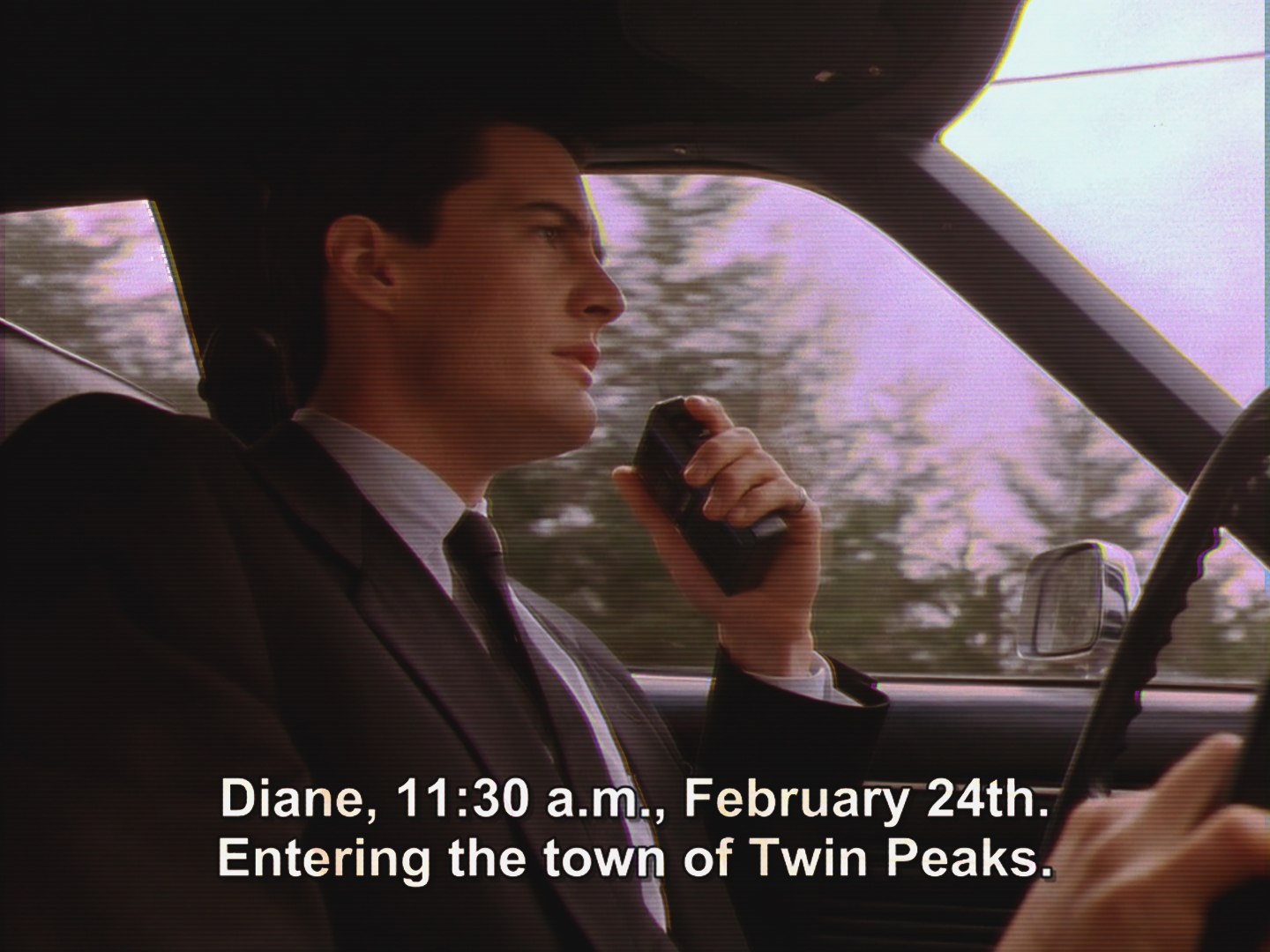Perchance to Dream: A Music Video Tribute to David Lynch
Description: Perchance to Dream: A Music Video Tribute to David Lynch is a fifteen track video art experience that pays homage to the surreal and haunting world of David Lynch. Featuring three original edits from the Twin Peaks soundtrack, the piece drives at high speed on a lonesome highway into an atmospheric journey through memory, mystery, and romance. The original rearrangements of Twin Peaks intersperse Angelo Badalamenti’s music with fragmented transmissions from the “Diane Tapes”. Throughout, the meditation on Lynch’s cinematic eyes and ears pulses with dreamlike visuals that blur the line between past and present, reality and illusion.
Medium: Video, sound collage
Runtime: 52 minutes
Release Date: February 26, 2025
Credits: Created by Michael Atkins Archival audio from the television and film of David Lynch
Tracklist:
- “I’m Deranged” by David Bowie, Lost Highway (1997)
- “In Dreams” by Roy Orbison, Blue Velvet (1986)
- “Blue Velvet” performed by Isabella Rossellini (1986)
- “Massive Quantities of Pie and a Glass of Water”, David Lynchcameo Twin Peaks
- Angelo Badalamenti recounts composing “Laura’s Theme” with David Lynch
- “Twin Peaks Theme” by Angelo Badalamenti (rearranged)
- Enter the Black Lodge, Twin Peaks (1991)
- “Audrey’s Dance” by Angelo Badalamenti (rearranged)
- “Falling” by Julee (rearranged)
- “I Told Every Little Star” by Lisa Scott, Mulholland Drive (2001)
- “This Magic Moment” performed by Lou Reed, Lost Highway (1997)
- “Love Me” performed by Nicolas Cage (1995)
- “Llorando” performed by Rebekah Del Rio in Mulholland Drive (2001)
- Finale of Blue Velvet (1986)
- “Love Me Tender” End Credits to Wild at Heart (1995)
The sonic landscape of Perchance to Dream is composed of 15 tracks, carefully selected to mirror David Lynch’s singular approach to music in film. Lifted directly from his television and cinematic works—each a testament to his impeccable ear, his attention to sonic detail, his love for Roy Orbison and Elvis, and his significant and lengthy collaborations with Angelo Badalamenti, Laura Dern, Kyle MacLachlan, and Isabella Rossellini.
Lynch’s use of popular music doesn’t just set a mood—he wields it like a weapon grade magnet, dragging the viewer deeper into scene and emotive surreality. His curatorial choices subvert, distort, and linger, turning “magic moments” into haunting, otherworldly experiences naming “every little star” or claiming derangement in the opening credits with a Bowie/Eno track. The music in Perchance to Dream distills the Lynchian ethos, somewhere between nostalgia and nightmare, when we can walk and talk in dreams, all of the time.
Part of what I admire most about Lynch as an artist is the interplay between his two major modes: the birder and the dreamer. Lynch had a very tactile side – delivering meteorological reports, constructing set furniture, and demonstrating a deep knowledge and appreciation for songbirds and owls along with trees good for gazing or graining. Grounding oneself in the natural world, keeping your ear to the ground, is essential for detecting surreality; the final scene of Blue Velvet epitomizes this duality as Jeffrey and Sandy admire a robin eating a worm to his mother’s detestation. “It’s a strange world, isn’t it?” If I can dream - Wild at Heart’s Oz Elvis Cage trifecta posits the existence of transcendental love. Lynch of course also is no stranger to the dreamscape. Dreams, premonitions, and nightmares factor into all of his work, especially Twin Peaks. What delight it is to realize you’re living in a local and global communities where everyone at the coffee shop is recovering from last night’s Moon in Pisces overnight unsettling. His explorations of the psyche and subconscious are most explored through the Black Lodge and White Lodge, but also include Lost Highway’s doppelgängers and Mulholland Drive’s Club Silencio, where “everything is an illusion.” Through it all there persists a romantic heart, which hopes that “sometimes the wind blows and the mysteries of love come clear.”
The three original rearrangements were edited by embedding Agent Cooper’s cassette tape recordings into the iconic Twin Peaks soundtrack. Thematically, “Twin Peaks Theme” sets the tone with Cooper’s original observations of the idyllic town of Twin Peaks to the unseen ally accomplice (lover?), Diane. “Audrey’s Dance” slinks into the seedy side, including Cooper’s report of Audrey Horne’s amorous pursuit of the special agent, before taking us across the border to the brothel casino known as One Eyed Jacks. Of course worth noting in Atlantic City is Agent Cooper’s predilection for the vice of gambling, with his trusted 10% return. Indeed roulette is rigged, just ask Dostoyevsky. Finally, Julee’s “Falling” includes Cooper’s reflections more broadly on luck and who really killed President Kennedy. “Haley’s Comet’s come and gone.”

“Diane, 6am please add the following sound to my master tape labeled ‘Sounds.’”